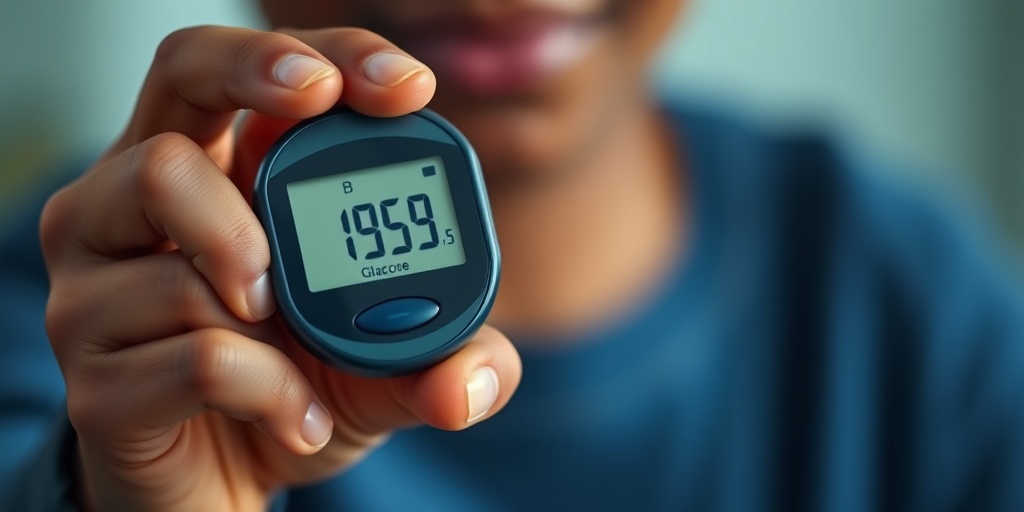What Is Type 1 Diabetes?
Type 1 diabetes is a chronic condition that occurs when the pancreas produces little to no insulin, a hormone essential for converting glucose (sugar) into energy. Unlike Type 2 diabetes, which is often linked to lifestyle factors and can sometimes be managed with diet and exercise, Type 1 diabetes is primarily an autoimmune disorder. This means that the body’s immune system mistakenly attacks and destroys the insulin-producing beta cells in the pancreas.
Typically diagnosed in children and young adults, Type 1 diabetes can occur at any age. The exact cause remains unclear, but genetic and environmental factors are believed to play a role. Individuals with Type 1 diabetes must manage their condition through a combination of insulin therapy, regular blood sugar monitoring, and lifestyle adjustments.
Understanding Insulin and Its Role
Insulin is crucial for regulating blood sugar levels. When you eat, your body breaks down carbohydrates into glucose, which enters the bloodstream. Insulin helps cells absorb this glucose for energy or storage. Without sufficient insulin, glucose builds up in the bloodstream, leading to high blood sugar levels, which can cause serious health complications over time.
Type 1 Diabetes vs. Type 2 Diabetes
While both Type 1 and Type 2 diabetes involve issues with insulin, they are fundamentally different:
- Type 1 Diabetes: An autoimmune condition where the body attacks insulin-producing cells.
- Type 2 Diabetes: Often develops due to insulin resistance, where the body does not use insulin effectively.
Understanding these differences is crucial for effective management and treatment. If you’re curious about the distinctions between these two types, you can explore more on platforms like Yesil Health AI for evidence-based insights.
Type 1 Diabetes Symptoms
Recognizing the symptoms of Type 1 diabetes is vital for early diagnosis and treatment. Symptoms can develop quickly, often over a few days or weeks. Here are some common signs to watch for:
Common Symptoms
- Increased Thirst: A frequent need to drink water, known as polydipsia, is a common symptom.
- Frequent Urination: Excessive urination, or polyuria, occurs as the body tries to eliminate excess glucose through urine.
- Extreme Hunger: Despite eating, individuals may feel persistently hungry due to the body’s inability to utilize glucose effectively.
- Fatigue: Lack of energy and persistent tiredness can result from the body’s struggle to convert food into energy.
- Blurred Vision: High blood sugar levels can lead to fluid changes in the eyes, causing blurred vision.
- Unexplained Weight Loss: Even with a normal or increased appetite, weight loss can occur as the body breaks down fat and muscle for energy.
Other Symptoms to Consider
In some cases, individuals may also experience:
- Slow Healing: Cuts and bruises may take longer to heal.
- Frequent Infections: Increased susceptibility to infections, particularly skin infections and yeast infections.
If you or someone you know is experiencing these symptoms, it’s essential to consult a healthcare professional for a proper diagnosis and management plan. Early intervention can significantly improve outcomes and quality of life.
Conclusion
Type 1 diabetes is a complex condition that requires ongoing management and support. Understanding the symptoms and differences between Type 1 and Type 2 diabetes is crucial for effective treatment. For more information and resources, consider visiting Yesil Health AI, where you can find evidence-based answers to your health questions. Remember, living with Type 1 diabetes is manageable with the right knowledge and support! 🌟

Causes of Type 1 Diabetes
Type 1 diabetes is a chronic condition that occurs when the pancreas produces little or no insulin, a hormone essential for converting glucose into energy. Understanding the causes of Type 1 diabetes is crucial for early detection and management. While the exact cause remains unclear, several factors contribute to its development.
Autoimmune Response
One of the primary causes of Type 1 diabetes is an autoimmune response. In this scenario, the body’s immune system mistakenly attacks and destroys the insulin-producing beta cells in the pancreas. This process can be triggered by various factors, including:
- Genetic predisposition: Certain genes increase the likelihood of developing Type 1 diabetes. If a family member has the condition, the risk is higher.
- Environmental triggers: Viral infections, such as those caused by the coxsackievirus, may initiate the autoimmune response in genetically predisposed individuals.
- Other autoimmune conditions: Individuals with other autoimmune diseases, like thyroid disease or celiac disease, may have a higher risk of developing Type 1 diabetes.
Genetic Factors
While genetics play a significant role, it’s important to note that not everyone with a family history of Type 1 diabetes will develop the condition. Researchers have identified specific genes associated with the disease, but the interplay between these genes and environmental factors is complex. Ongoing research aims to uncover more about how these genetic markers influence the risk of Type 1 diabetes.
Potential Triggers
In addition to genetic factors, several potential triggers may lead to the onset of Type 1 diabetes:
- Viral infections: Certain viruses have been linked to the onset of Type 1 diabetes. For instance, the mumps virus and cytomegalovirus may play a role in triggering the autoimmune response.
- Dietary factors: Some studies suggest that early exposure to certain foods, such as cow’s milk or gluten, may increase the risk of developing Type 1 diabetes in genetically susceptible individuals.
- Stress: Physical or emotional stress may also contribute to the onset of Type 1 diabetes, although more research is needed to understand this connection fully.
Risk Factors for Type 1 Diabetes
Identifying the risk factors for Type 1 diabetes can help in understanding who may be more susceptible to this condition. While anyone can develop Type 1 diabetes, certain factors increase the likelihood of its occurrence.
Age
Type 1 diabetes can develop at any age, but it is most commonly diagnosed in children, teenagers, and young adults. The peak age for diagnosis is typically between 10 and 14 years old. However, adults can also develop Type 1 diabetes, sometimes referred to as Type 1.5 diabetes or latent autoimmune diabetes in adults (LADA).
Family History
A family history of Type 1 diabetes significantly increases the risk. If a parent or sibling has the condition, the likelihood of developing it is higher. Genetic testing can help identify individuals at risk, although not everyone with a family history will develop the disease.
Other Autoimmune Disorders
Individuals with other autoimmune disorders, such as thyroid disease or celiac disease, are at a greater risk of developing Type 1 diabetes. This correlation suggests a shared genetic or environmental factor that predisposes individuals to multiple autoimmune conditions.
Geographic Location
Interestingly, the incidence of Type 1 diabetes varies by geographic location. Countries with higher rates of Type 1 diabetes include Finland and Sweden, while lower rates are observed in countries like China and Japan. This variation may be due to environmental factors, lifestyle, and dietary habits.
Ethnicity
Research indicates that certain ethnic groups are at a higher risk for Type 1 diabetes. For example, individuals of European descent are more likely to develop the condition compared to those of African or Asian descent. Understanding these disparities can help in targeted prevention and awareness efforts.
In conclusion, while the exact causes of Type 1 diabetes remain elusive, a combination of genetic, environmental, and autoimmune factors contribute to its development. Recognizing the risk factors can aid in early detection and management, ultimately improving the quality of life for those affected by this condition. 🌟

Diagnosing Type 1 Diabetes
Diagnosing Type 1 Diabetes is a crucial step in managing this chronic condition. Unlike Type 2 diabetes, which often develops gradually, Type 1 diabetes can manifest suddenly and requires immediate attention. Understanding the signs and symptoms can lead to a timely diagnosis and effective treatment.
Common Symptoms of Type 1 Diabetes
Recognizing the symptoms of Type 1 Diabetes is essential for early diagnosis. Here are some common signs to watch for:
- Increased Thirst: A persistent feeling of thirst that doesn’t go away, even after drinking fluids.
- Frequent Urination: Needing to urinate more often than usual, especially at night.
- Extreme Hunger: Feeling hungry all the time, even after eating.
- Unexplained Weight Loss: Losing weight without trying, which can occur due to the body not being able to use glucose effectively.
- Fatigue: Feeling unusually tired or lethargic.
- Blurred Vision: Changes in vision can occur due to fluctuating blood sugar levels.
- Slow Healing: Cuts and bruises may take longer to heal.
Diagnostic Tests for Type 1 Diabetes
If you or someone you know is experiencing these symptoms, it’s important to consult a healthcare professional. They may perform several tests to diagnose Type 1 Diabetes, including:
- Fasting Blood Sugar Test: Measures blood sugar levels after fasting for at least 8 hours. A reading of 126 mg/dL or higher indicates diabetes.
- Random Blood Sugar Test: A blood sample taken at any time, regardless of when the person last ate. A reading of 200 mg/dL or higher suggests diabetes.
- Hemoglobin A1c Test: This test provides an average blood sugar level over the past 2-3 months. An A1c of 6.5% or higher indicates diabetes.
In some cases, healthcare providers may also conduct additional tests to differentiate between Type 1 and Type 2 Diabetes, as the treatment approaches differ significantly.
Managing Type 1 Diabetes
Once diagnosed, managing Type 1 Diabetes becomes a lifelong commitment. Effective management involves a combination of lifestyle changes, medication, and regular monitoring of blood sugar levels.
Insulin Therapy
Insulin therapy is the cornerstone of managing Type 1 Diabetes. Since the body cannot produce insulin, individuals must administer it through injections or an insulin pump. There are several types of insulin, including:
- Rapid-acting Insulin: Starts working within minutes and is used to control blood sugar spikes after meals.
- Short-acting Insulin: Takes about 30 minutes to start working and lasts for several hours.
- Intermediate-acting Insulin: Covers insulin needs for about half a day or overnight.
- Long-acting Insulin: Provides a steady level of insulin over a longer period, often used to manage blood sugar levels throughout the day and night.
Monitoring Blood Sugar Levels
Regular monitoring of blood sugar levels is vital for effective management. This can be done using:
- Blood Glucose Meters: Devices that measure blood sugar levels using a small drop of blood.
- Continuous Glucose Monitors (CGMs): Devices that provide real-time blood sugar readings and trends throughout the day.
Keeping track of blood sugar levels helps individuals make informed decisions about food, activity, and insulin doses.
Healthy Eating and Lifestyle Choices
Nutrition plays a significant role in managing Type 1 Diabetes. A balanced diet that includes:
- Whole grains
- Fruits and vegetables
- Lean proteins
- Healthy fats
can help maintain stable blood sugar levels. Additionally, regular physical activity is essential for overall health and can improve insulin sensitivity.
Emotional Well-being
Living with Type 1 Diabetes can be emotionally challenging. It’s important to seek support from healthcare professionals, family, and friends. Joining support groups or online communities can also provide valuable resources and encouragement. Remember, you are not alone in this journey! 💪
By understanding the diagnosis and actively managing Type 1 Diabetes, individuals can lead fulfilling lives while effectively controlling their condition.

Complications of Type 1 Diabetes
Type 1 diabetes is a chronic condition that requires careful management to prevent complications. While many people with this condition lead full and active lives, it’s crucial to understand the potential complications that can arise if blood sugar levels are not properly controlled. Here, we explore some of the most common complications associated with Type 1 diabetes.
Short-Term Complications
Short-term complications can occur quickly and may require immediate attention. These include:
- Hypoglycemia: This condition occurs when blood sugar levels drop too low, leading to symptoms such as shakiness, confusion, and even loss of consciousness. It’s essential for individuals with Type 1 diabetes to recognize the signs and treat hypoglycemia promptly.
- Diabetic Ketoacidosis (DKA): DKA is a serious condition that arises when the body starts breaking down fat for energy instead of glucose, leading to a buildup of acids called ketones. Symptoms include nausea, vomiting, abdominal pain, and fruity-smelling breath. DKA requires immediate medical attention.
Long-Term Complications
If Type 1 diabetes is not managed effectively over the long term, several complications can develop:
- Cardiovascular Disease: Individuals with Type 1 diabetes are at a higher risk for heart disease and stroke. Maintaining healthy blood pressure and cholesterol levels is crucial for reducing this risk.
- Neuropathy: High blood sugar levels can damage nerves, leading to diabetic neuropathy. This condition can cause pain, tingling, or loss of sensation, particularly in the feet and hands.
- Retinopathy: Diabetes can affect the blood vessels in the retina, leading to vision problems or even blindness. Regular eye exams are essential for early detection and treatment.
- Kidney Damage: Diabetes can harm the kidneys over time, potentially leading to kidney failure. Monitoring kidney function through regular check-ups is vital.
Understanding these complications is essential for anyone living with Type 1 diabetes. Regular check-ups, blood sugar monitoring, and a healthy lifestyle can significantly reduce the risk of these complications.
Living with Type 1 Diabetes
Living with Type 1 diabetes can be challenging, but with the right strategies and support, individuals can lead fulfilling lives. Here are some key aspects to consider when managing this condition.
Daily Management
Effective daily management is crucial for maintaining stable blood sugar levels. This includes:
- Monitoring Blood Sugar: Regularly checking blood glucose levels helps individuals understand how their body responds to food, exercise, and insulin. Continuous glucose monitors (CGMs) can provide real-time data and alerts.
- Insulin Therapy: People with Type 1 diabetes require insulin therapy to manage their blood sugar levels. This can involve multiple daily injections or the use of an insulin pump.
- Healthy Eating: A balanced diet that includes carbohydrates, proteins, and healthy fats is essential. Understanding carbohydrate counting can help in managing insulin doses effectively.
Emotional Well-being
Living with a chronic condition can take a toll on mental health. It’s important to address emotional well-being by:
- Seeking Support: Connecting with support groups or communities can provide encouragement and shared experiences. Many find comfort in discussing their challenges with others who understand.
- Managing Stress: Stress can impact blood sugar levels. Techniques such as mindfulness, yoga, or meditation can help in managing stress effectively.
Staying Active
Physical activity is beneficial for everyone, especially those with Type 1 diabetes. Regular exercise can help improve insulin sensitivity and overall health. Here are some tips:
- Choose Enjoyable Activities: Whether it’s walking, swimming, or dancing, find activities that you enjoy to make exercise a regular part of your routine.
- Plan Ahead: Always check blood sugar levels before and after exercise, and be prepared with snacks or glucose tablets in case of hypoglycemia.
Living with Type 1 diabetes requires commitment and education, but with the right tools and support, individuals can thrive and enjoy a high quality of life. Remember, you are not alone on this journey! 💪

Frequently Asked Questions about Diabetes, Type 1
What is Diabetes, Type 1?
Diabetes, Type 1 is an autoimmune condition where the pancreas produces little to no insulin. This type of diabetes typically develops in children and young adults, but it can occur at any age. Insulin is crucial for regulating blood sugar levels, and without it, individuals can experience serious health complications.
What are the common symptoms of Diabetes, Type 1?
Common symptoms of Diabetes, Type 1 include:
- Increased thirst and frequent urination
- Extreme hunger
- Unexplained weight loss
- Fatigue
- Blurred vision
How does Diabetes, Type 1 differ from Type 2?
The primary difference between Diabetes, Type 1 and Type 2 is the cause of the disease. Type 1 is an autoimmune disorder where the body attacks insulin-producing cells, while Type 2 is often related to lifestyle factors and insulin resistance. Additionally, Type 1 usually develops earlier in life, whereas Type 2 is more common in adults.
Is there a cure for Diabetes, Type 1?
Currently, there is no known cure for Diabetes, Type 1. However, ongoing research is exploring potential treatments and advancements, including stem cell therapy and artificial pancreas technology. Management typically involves insulin therapy, dietary changes, and regular monitoring of blood sugar levels.
What are the treatment options for Diabetes, Type 1?
Treatment for Diabetes, Type 1 primarily involves:
- Insulin therapy (injections or insulin pumps)
- Regular blood sugar monitoring
- Healthy eating and meal planning
- Regular physical activity
What is the life expectancy for someone with Diabetes, Type 1?
With proper management and care, individuals with Diabetes, Type 1 can lead long and healthy lives. Advances in treatment and technology have significantly improved life expectancy and quality of life for those living with this condition.
Can Diabetes, Type 1 be managed without insulin?
Currently, insulin is essential for managing Diabetes, Type 1. While some research is exploring alternative treatments, insulin remains the most effective way to control blood sugar levels in individuals with this type of diabetes.
What is Type 1.5 Diabetes?
Type 1.5 Diabetes, also known as Latent Autoimmune Diabetes in Adults (LADA), is a form of diabetes that shares characteristics of both Type 1 and Type 2 diabetes. It typically occurs in adults and may initially be misdiagnosed as Type 2 due to its slower onset. Individuals with Type 1.5 may eventually require insulin therapy.
How can I find support for managing Diabetes, Type 1?
Support groups and communities can be invaluable for individuals with Diabetes, Type 1. Online forums, local meetups, and diabetes organizations offer resources, advice, and a sense of community. Connecting with others who understand the challenges can provide emotional support and practical tips.
What lifestyle changes can help manage Diabetes, Type 1?
Managing Diabetes, Type 1 effectively often involves making lifestyle changes such as:
- Eating a balanced diet rich in whole foods
- Engaging in regular physical activity
- Monitoring blood sugar levels consistently
- Staying hydrated
- Managing stress through relaxation techniques
Where can I find the latest news on Diabetes, Type 1 research?
To stay updated on the latest research and news regarding Diabetes, Type 1, consider following reputable diabetes organizations, medical journals, and health news websites. Social media platforms and online forums can also provide insights into recent advancements and community experiences.




